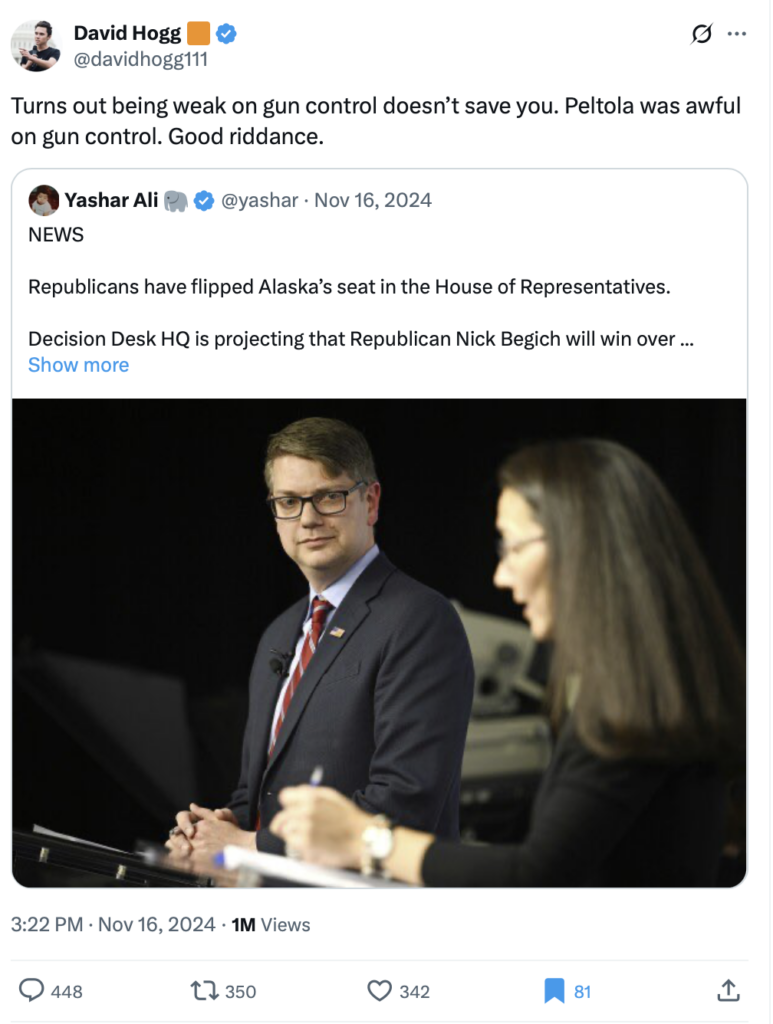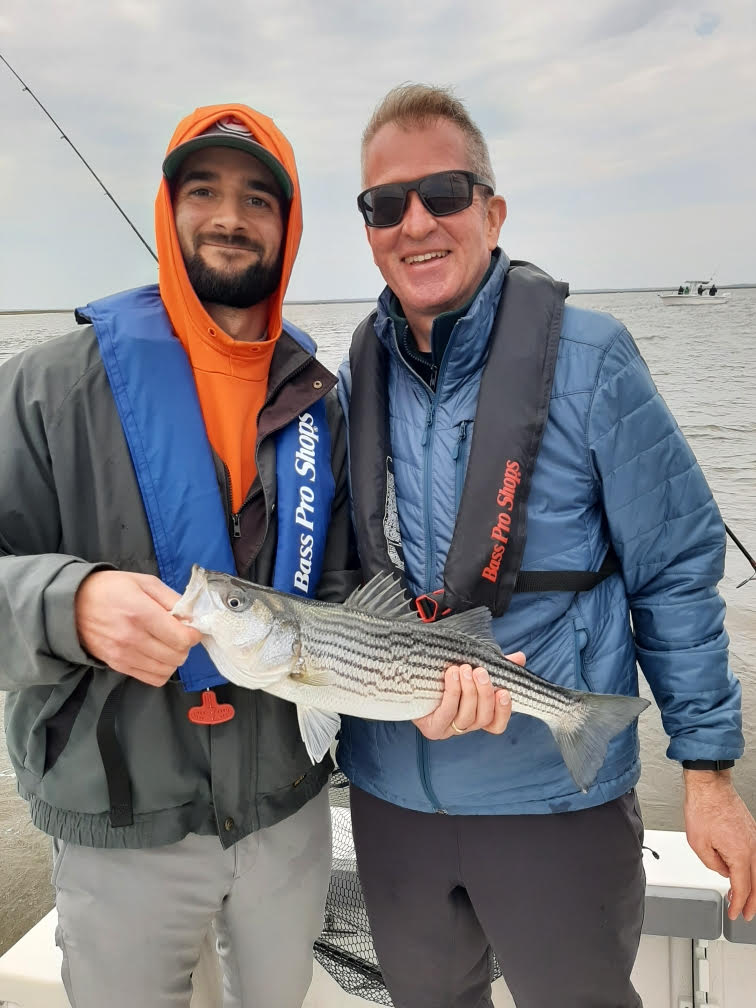Rick Hess and I check in with Nat Malkus on a new episode of his “Report Card” podcast. You can listen here or wherever you get your podcasts. We discuss why, even if you’re frustrated with what has happened at Harvard, we all have to be Crimson now given the stakes. We talk waivers, AERA, due process, and more.
Earlier this month, Will Marshall (and PPI) and I (and BW) co-hosted an event on Rick Kahlenberg ‘s new book on class-based affirmative action and his journey through the thicket of that debate. You can watch the event here.
I’ll be discussing some current issues at AERA and PPI in Denver this weekend. Other events I’m doing next few weeks:
📍 April 30th – AEI virtual event
On Trump’s first 100 days in education policy. Spoiler: Feels like longer.
📍May 6th – CGLR Webinar
Discussing school security and why “hardening the target” may miss the mark in schools.
📍 May 8th – SDP Convening at Harvard
Morning plenary on the federal role in education research with Derrell Bradford, Sonja Santelises, Angela Minnici, and Chris Minnich.
📍 May 12th – Talking Medicaid and schools and why that matters with Sarah Broome for a Bellwether LinkedIn.
More later in May and June. Hope to see you at one or more.
Want Eduwonk.com in your inbox via Substack? Sign up for free here.
The Dem Choice on Choice
Over the past few months, a quiet but intense debate has broken out among education-reform Democrats over whether the party should embrace private school choice—particularly the ESAs spreading kudzu-like across the country.* The growth of these programs, donor interest, and a broader strategic “what now?” conversation—post-pandemic and with Democrats on their heels on an issue the party usually performs well on—are driving the conversation.
Ashley Berner, Chris Cerf, and I talked through some of this in a webinar earlier this month.
Predictably, establishment Democrats—especially the teachers unions—are a hard no. They want Democrats to stop even being charter curious, sticking solely to public sector–controlled options. That stance is politically out of step and does little for families seeking more than what they currently get. It also overlooks the solid (though increasingly pressured) record of urban charters and the energy for new options percolating across the system.
Still, my take on the broader question is no—and not just because I doubt that today’s backlash-fueled rush to private choice will reliably expand opportunity for low-income students. And I don’t lose a lot of sleep about giving persistently underserved families some options. Politically, however, I just don’t think Democrats need to embrace private school choice wholesale or without meaningful guardrails around civil rights and transparency as well as means testing to meet this moment.
They do, however, need to change. At a time of real disruption and frustration Democrats need to be a party that welcomes a much wider range of perspectives on these questions—especially given the broad support for choice around the country. A flat “no,” or even the perception of being a party of no, isn’t a viable long-term strategy. A rigid stance amazingly manages to turn off some centrist and conservative Dems as well as some pro-reform progressive ones. It’s not the only reason Donald Trump made gains among non-white voters 2016 to 2024, but it’s one of them.
I could show you polling all day, but forget that for a moment: this is America—we like choice. Being on the wrong side of that culturally and politically is not a great place to be.
Political parties need contrast, yes—but they also need inclusion. Winning in today’s tight races depends on addition, not subtraction. Democrats don’t need to become Republicans on education, but they do need to change their ways. That’s why Democrats should make room for people who see school choice differently, even if the party doesn’t officially adopt those positions. And it’s worth remembering that good artists borrow, great ones steal.
Politically, even post-pandemic, choice + accountability matches up well against anything goes. People don’t want to pay for the affluent to go to private school. What doesn’t work is being seen as lashed to the status quo or dismissive of the concerns. Or worse, politicians who emphatically say they’re not for the status quo either but then go on to offer five lame and exhausted ideas as evidence of their appetite for change.
Put plainly: don’t blackball Democrats who support ESAs or vouchers. 2028 Democratic hopefuls in including governors like Josh Shapiro (PA) and J.B. Pritzker (IL) flirt with choice alternatives. Jared Polis, the maverick governor of Colorado is a longtime charter school champion and education innovator. California Governor Gavin Newsom was OK on charter schools—even pre-podcast! Rahm Emanuel is serving up some hard truths. This is the conversation Democrats must have.
The teachers unions will push hard for ideological purity—they have an existential financial interest in doing so. But Democratic leaders should prioritize winning elections and actually governing. Sensible policy would be nice, too. Especially right now. And especially policy that is responsive to families who have been denied educational quality for far too long. All those things are attainable.
Want Eduwonk.com in your inbox via Substack? Sign up for free here.
Lessons From Other Issues
In the 1990s, pro-life Democrats were being pushed out of the party. In 1992, Bob Casey Sr., a pro-life Democratic governor, was barred from speaking at the national convention. Around the same time, Bill Clinton articulated a position on abortion that resonated with a broad swath of Americans: it should be safe, legal, and rare—a formulation that still holds up pretty well. It didn’t end the debate, but it signaled moral seriousness and some welcome nuance. Predictably, interest groups soon pressured him to drop the “rare.” Hillary Clinton stuck with the phrase for a time, but it eventually fell out of use.
Like school choice, abortion is complicated. And like school choice, it depends on the details—something I’ve written about before. Are we talking about first trimester or third? With school choice are we talking about allowing civil rights laws to follow public dollars, or handing out blank checks without oversight?
Imagine if Democrats had kept Clinton’s framing—or said: This party supports reproductive choice, and we also respect that reasonable people can hold sincere, differing views on this. Not every pro-life voter fetishizes The Handmaid’s Tale. Some are acting on deeply held beliefs, not misogynists looking to impose theocracy.
If Democrats had taken that approach, some of the pro-life voters who held their noses and voted for Trump—twice or three times—might have seen things differently. If they hadn’t felt dismissed or alienated, some might have stayed.
And then there’s guns. Activist David Hogg publicly cheered the loss of Rep. Mary Peltola’s seat because she wasn’t anti-gun enough. She represented Alaska. Interestingly, Randi Weingarten, the American Federation of Teachers president, is backing Hogg’s effort to purge incumbent Democrats who stray from orthodoxy.
But here’s the thing: you can have an anti-gun Democrat, or you can have a Democrat representing Alaska—you can’t have both. Guns are part of the culture, part of backcountry safety, and part of daily life there for many residents.
Democrats don’t need to become a pro-gun party either. But they do need candidates who fit their districts. That requires signaling respect for local views and resisting the urge to impose national litmus tests. You build a big tent not by agreeing on everything, but by making space for people who see some issues differently—even when the party’s official position doesn’t shift.
A little nuance sometimes goes a long way.
Back to Choice
School choice is becoming a way of life in many regions—especially fast-growing ones with political clout. In a country where a majority of students will soon have a right to exit public schools, Democrats need to offer something more than a flat “no,” they need a compelling agenda that includes robust public school choice and charter options at a minimum.
Before we get to that, if Democrats can’t even tolerate elected officials in their own party who see the choice issue differently, then it’s going to be a long time in the wilderness—on this issue. Especially if the party can’t focus on what matters and avoid getting sucked into 70–30 and 80/20 issues. See: book bans or parents’ rights.
Parents want options and responsiveness. Meanwhile, key stakeholders resist reform, resist accountability, and resist choice. It’s a natural tension when you have producer interests (unions and the education establishment) and consumer interests (parents) under the same tent. That’s not sustainable without some accommodation and an agenda with new ideas and energy behind it.
Democrats don’t need to flip their position on vouchers or other private choice mechanisms. They should stand up for the idea that public accountability should follow public dollars. That the rich should pay their own way when it comes to private schooling. But they do need to change their posture toward those who see those questions differently and signal to parents that they get the frustration.
In other words, to use the buzzwords of the day, Dems need to be more inclusive on these questions and hold space for people who see things differently. And then create an agenda with compelling ideas. Again, attainable.
*Worth noting: Among the myriad oddities of the choice debate, resistance to choice was stronger when the evidence base for choice was stronger. Now, support is growing even as the research on broad programs is weaker. But school choice is—and always has been—as much about values as evidence. Parents are fundamentally pragmatic and the values are changing.
Friday Fish Porn: Choice edition
We’re talking school choice, so here’s longtime school choice advocate Bill Phillips and his son with a striped bass caught recently in New Jersey waters.
First time? Yes, here are hundreds of pics of education folks with fish, and more here. It’s a unique archive and hopefully reminds you of the human side of these issues – and also that we need to keep our water and air clean. And it’s always fish pics if you get Eduwonk via Substack—to avoid spam filters.
View the original article and our Inspiration here


